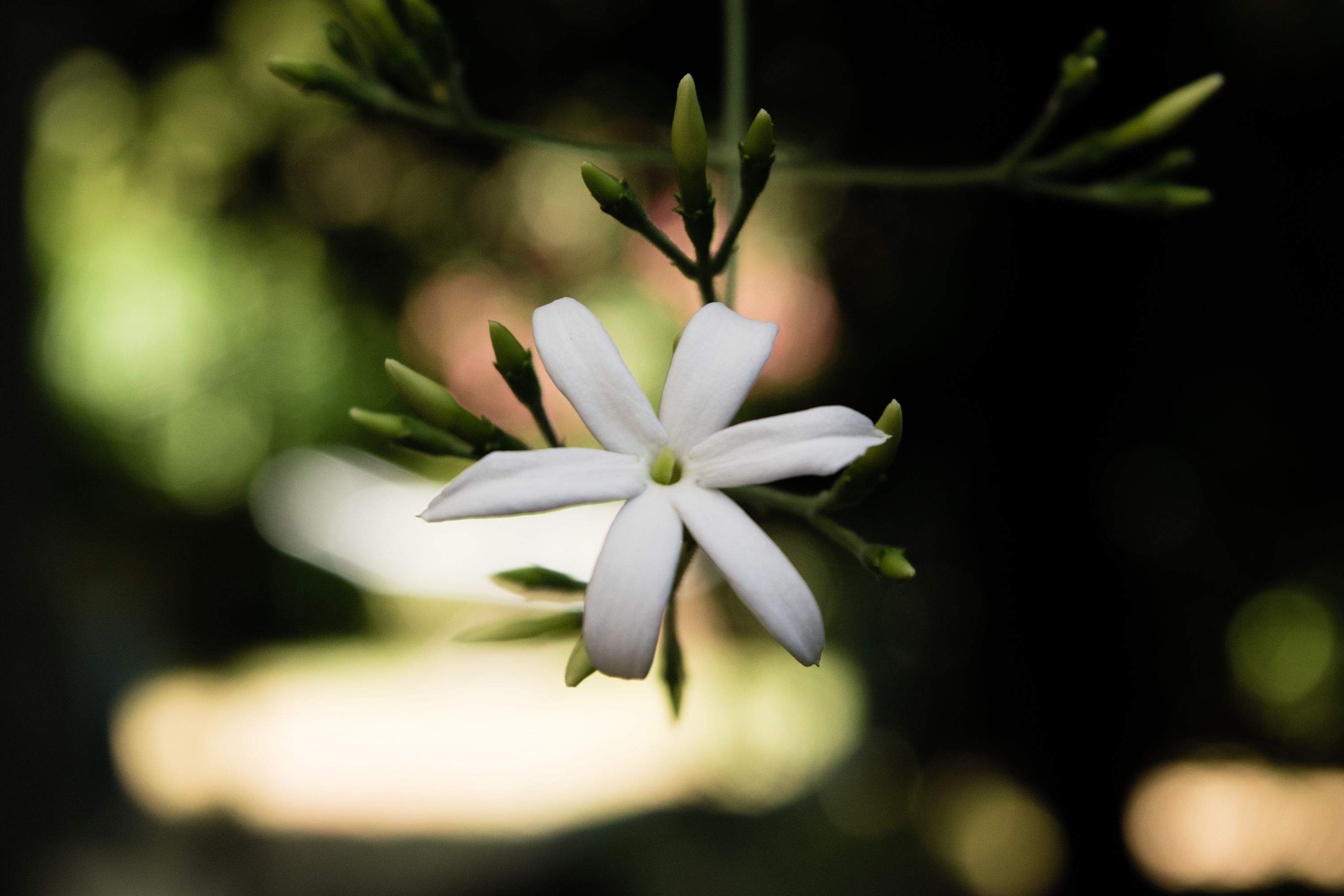Lemon-scented jasmine
(Jasminum azoricum)

Description
Jasminum azoricum, the lemon-scented jasmine, is a species of flowering plant in the olive family. It is an evergreen twining vine native to the Portuguese island of Madeira.The compound leaves consist of 3 bright green leaflets. The fragrant white star-shaped flowers appear in panicles from the leaf axils in summer, evolving from deep pink buds. The species is critically endangered in its native Madeira. Reports of remaining populations vary between 6 and 50 individual plants in two separate areas, Funchal and Ribeira Brava. Jasminum azoricum, which does not tolerate freezing temperatures, has long been in cultivation in Europe as a greenhouse plant with records in Netherlands since 1693 and England from about 1724. It has been prized for its bright evergreen foliage, long flowering period and scented blooms. Plants are readily propagated from cuttings and by layering. The species prefers a sunny, frost-free position with support from structures such as fences or posts. In the UK this plant has gained the Royal Horticultural Society’s Award of Garden Merit. Jasmine (taxonomic name: Jasminum) is a genus of shrubs and vines in the olive family (Oleaceae). It contains around 200 species native to tropical and warm temperate regions of Eurasia, Africa, and Oceania. Jasmines are widely cultivated for the characteristic fragrance of their flowers. A number of unrelated plants contain the word "jasmine" in their common names (see Other plants called "jasmine"). Jasmine can be either deciduous (leaves falling in autumn) or evergreen (green all year round), and can be erect, spreading, or climbing shrubs and vines. Their leaves are borne in opposing or alternating arrangement and can be of simple, trifoliate, or pinnate formation. The flowers are typically around 2.5 cm (0.98 in) in diameter. They are white or yellow, although in rare instances they can be slightly reddish. The flowers are borne in cymose clusters with a minimum of three flowers, though they can also be solitary on the ends of branchlets. Each flower has about four to nine petals, two locules, and one to four ovules. They have two stamens with very short filaments. The bracts are linear or ovate. The calyx is bell-shaped. They are usually very fragrant. The fruits of jasmines are berries that turn black when ripe. The basic chromosome number of the genus is 13, and most species are diploid (2n=26).
Taxonomic tree:







